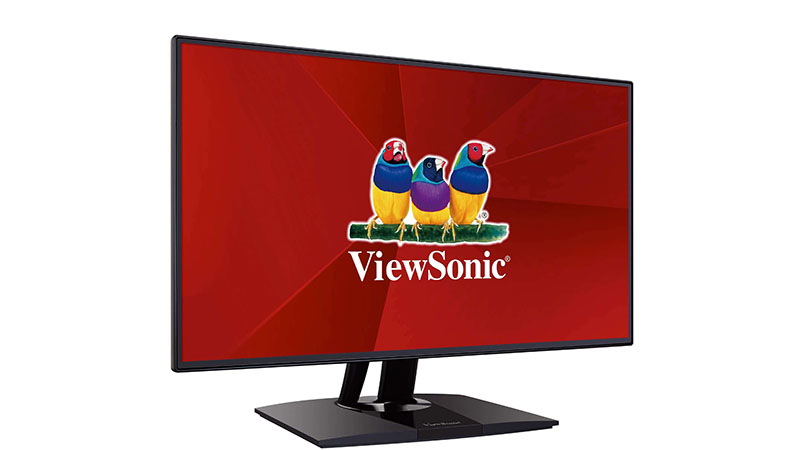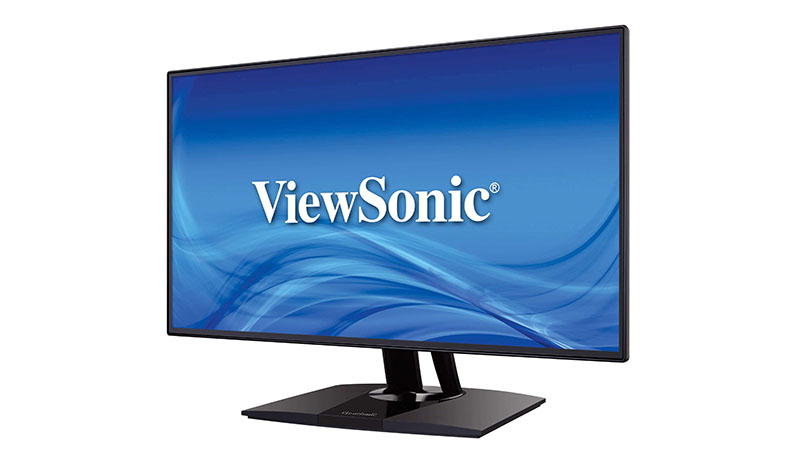A Detailed Guide for Photographers
The ViewSonic VP2468 is a classic powerful and feature-packed 24-inch full HD monitor for video editing. This dynamic model of ViewSonic comes with skinny bezels, a broad color gamut, and fantastic color consistency, making the model highly suitable for the intended uses, such as video editing, graphic design, and photo editing. For accurate color uniformity, the VP2468 model from ViewSonic features factory-calibration. Each display comes with a color calibration document of three pages. Color gamut happens to be better than 99% of sRGB.
The IPS-equipped VP2468 model from the house of ViewSonic features a minimalist yet brilliant exterior and robust performance at a reasonable price, which offers a great sweet spot to most of the users. Nowadays, hardware calibration can be rarely seen in the 1080p systems. However, it’s worth finding out whether all these advantages help the ViewSonic VP2468 achieve an edge over the Eizo FS2735 and the Acer Predator XB271HU.

The Good
- · Unobtrusive design
- · Accurate colors
- · Excellent options for video connectivity
- · Energy efficient
- · Powerful feature set
- · Amazing stand adjustability
The Bad
- · Lacks speakers
- · Lacks DisplayPort 1.3
For more details and price, click here.
Bottom Line
The ViewSonic VP2468 is a moderately priced, 24-inch monitor, which offers robust performance and an assortment of settings, ports, and adjustment options. It is one of the most powerful monitors for video editing.
Read more : Best monitor for video editing
Contents
What do you get with the ViewSonic VP2468?
Technical Specifications of the ViewSonic VP2468
- · Screen Size: 24-Inch
- · Display area: 23.8-inch
- · Aspect Ratio: 16:9
- · Resolution: 1920 x 1080
- · Panel Technology: Advance In-Plane Switching (IPS)
- · Response Time: 5ms
- · Refresh Rate: 60Hz
- · Static Contrast Ratio: 1000:1
- · In-built Speakers: No
- · Brightness: 250cd/m²
- · Connectivity: DisplayPort 1.2 x 1, Mini DisplayPort, DisplayPort Out, HDMI x 2, USB 3.0 x 5, VGA x 1, Audio Jack
- · Backlight: WLED (White Light Emitting Diode)
- · Energy Consumption: 22W
- · Viewing Angle: 178-degree vertical, 178-degree horizontal
- · Height Adjustability: Yes (5.1-inch)
- · Pivot: Yes
- · Swivel: Yes
- · Tilt: Yes
- · Weight: 12.5lbs
- · Dimension of System Inclusive of Stand: 21.2’’ (W) x 20.5’’ (H) X 8.5’’ (D)
- · Price: USD 250
Appearance
The very first thing one would witness about the ViewSonic VP2468 is the visual mechanism of the monitor. The system comes with an anti-glare coat that has a matte texture and features edge-to-edge extension. On examining the system closely, one can find an extremely narrow border surrounding the display space behind the layer of anti-glare coat. The broad color gamut of the system together with the extremely narrow borders, lack of an anterior power light, and absence of visible controls lead to an accurate and vivid picture without any potential surrounding distractions. However, in spite of the stable and consistent specifications, certain differences in the color are likely to be visible at the extreme corners while, for instance, a mid-grey full-screen is displayed.
The ViewSonic VP2468 is a bit peculiar when it comes to the power supply. The system has an in-built power supply that features a 3-pin IEC mains connector, instead of the external standard power ‘brick’ that is noticed in a lot of new displays. The monitor also features a 4-point VESA mount. The VP2468 comes with a square-shaped stand that is connected with the mount to facilitate height adjustment, swivel, tilt, and rotate mechanisms with the help of a robust and vertical slide. Almost all the surfaces of the system are made of plastic featuring a matte black finish, whereas the vertical stand features a mid-grey glossy finish.
Connections and Controls
The user controls of the VP2468 are adequately tucked at the rear end. There is one round and large power button and five small rectangular buttons. All these buttons are vertically arranged in a row behind the right edge. When you click a rectangular button, a menu will fire up on screen together with the function labels for that particular button. If you rotate the display into portrait mode, the orientation of the list also tends to turn. Auto image rotation can also be done with the help of suitable graphics card or software.
The menu features the Present Color Mode, Brightness/Contrast, Input Select, Main Menu, and Exit (Icons corresponding to the 5-rectangular buttons from the topmost to the bottom one). If you press any button except the Exit while the menu is present on the screen, the 5-rectangular buttons will turn into selection and navigation buttons. That being said, the accurate operation of each of the buttons tends to vary based upon the selected menu.

No power indicator is placed on the interior part of the system’s display. However, the power button at the posterior end emits an orange glow while the system’s display is in the standby mode and blue light when an image is present on the screen.
Connections to the system’s display are carefully hidden with the help of a ledge, which passes along the posterior part of the VP2468 beneath the VESA mount. The connector operations are labeled clearly with tiny and faint greyish symbols marked on the case overhead the ledge. Starting from the left end to the right end these are the – ‘Mains Power’, ‘HDMI (2)’, ‘DisplayPort’, ‘Mini-DisplayPort’, ‘DisplayPort-out’, and ‘Audio Out’ including USB input as well as 4-outputs for in-built USB 3.0 hub. The outs and ins for the system’s video connectors facilitate daisy-chaining several displays. This feature, together with the tiny display of the borders makes this monitor the perfect pick to tile in multi-display setups.
The Display
The VP2468 is designed using the LG Display LM238WF4-SSA1 AH-IPS (Advanced High-Performance In-Plane Switching) LCD panel that includes a WLED backlight. In comparison to the other LCD panel technologies, the AH-IPS panels provide broad viewing angles together with consistent full-color gamut. The use of the AH-IPS panels is known as SuperClear in the ViewSonic language.
The real size of the display in this display screen is 23.8-inch diagonally viewable. The viewing angles measure to be 178 degrees vertical and horizontal. The response time of the system is estimated to be five milliseconds. The native resolution of the display is calculated to be 1920 x 1080 while the refresh rate is 60Hz. The color depth happens to be 8 bits with a robust internal 14 bits LUT.
Calibration

Apart from the VP2468’s factory-calibration for uniformity levels throughout the display space, the menu on the screen also provides 9-preset areas of color, including Native, DICOM-SIM, REC709, SMPTE-C, EBU, sRGB, together with 3-user settings, including CAL1, CAL2, and CAL3.
All the professional monitors of the VP-series of ViewSonic come with calibration system, known as Colorbration Kit. The kit is designed based on the next-gen colorimeter of X-Rite, the CS-XRi1 that has been specially built for the modern LCD-display technologies, such as CCFL, Wide Gamut, RGB LED, & White LED display technologies. The system makes use of an entirely new and contemporary calibration architecture, filter technology, and optical system. The Colorbration software typically runs on the Apple OS X and Windows OS; however, the VP2468 can be profiled and calibrated equally well for the systems based on Linux, by making use of the Argyll Color Management System and the DisplayCal.
Performance
The ViewSonic VP2468 works amazingly with Mass Effect Andromeda and Battlefield 1 other than for the anticipated motion blur because of the 5ms and 60Hz specification limitations. The colors remain lively and pleasantly saturated.
Finally, this monitor from ViewSonic doesn’t come with G-Sync or FreeSync technology. There is hardly any reason to require these features for 60Hz 1080p gaming; however, the hardware of the system is already quite capable of the AMD’S VRR solution. The VP2468 is no doubt the most reliable monitor for video editing, but the responsiveness and excellent colors of the system help in offering a genuinely enticing display to carry out gaming activities on the other side.
Conclusion
The ViewSonic VP2468 can be a great buy if you’re looking for a primary display while expanding your graphic arts or photo editing career. Although the price may seem a bit high because it is a 1080p item, yet the high-quality professional output rendered by it makes the product worth the price. The WLED backlight and AH-IPS panel of the monitor helps it in delivering amazing color performance and seamless functionality at a quite reasonable price. The ViewSonic VP2468 is not only a great monitor for video editing, but it is also an excellent product for gaming. Hence, apart from sharpening your video editing skills with the help of this monitor, you can also try your hands at the various exciting computer games and develop your potential in the domain.

